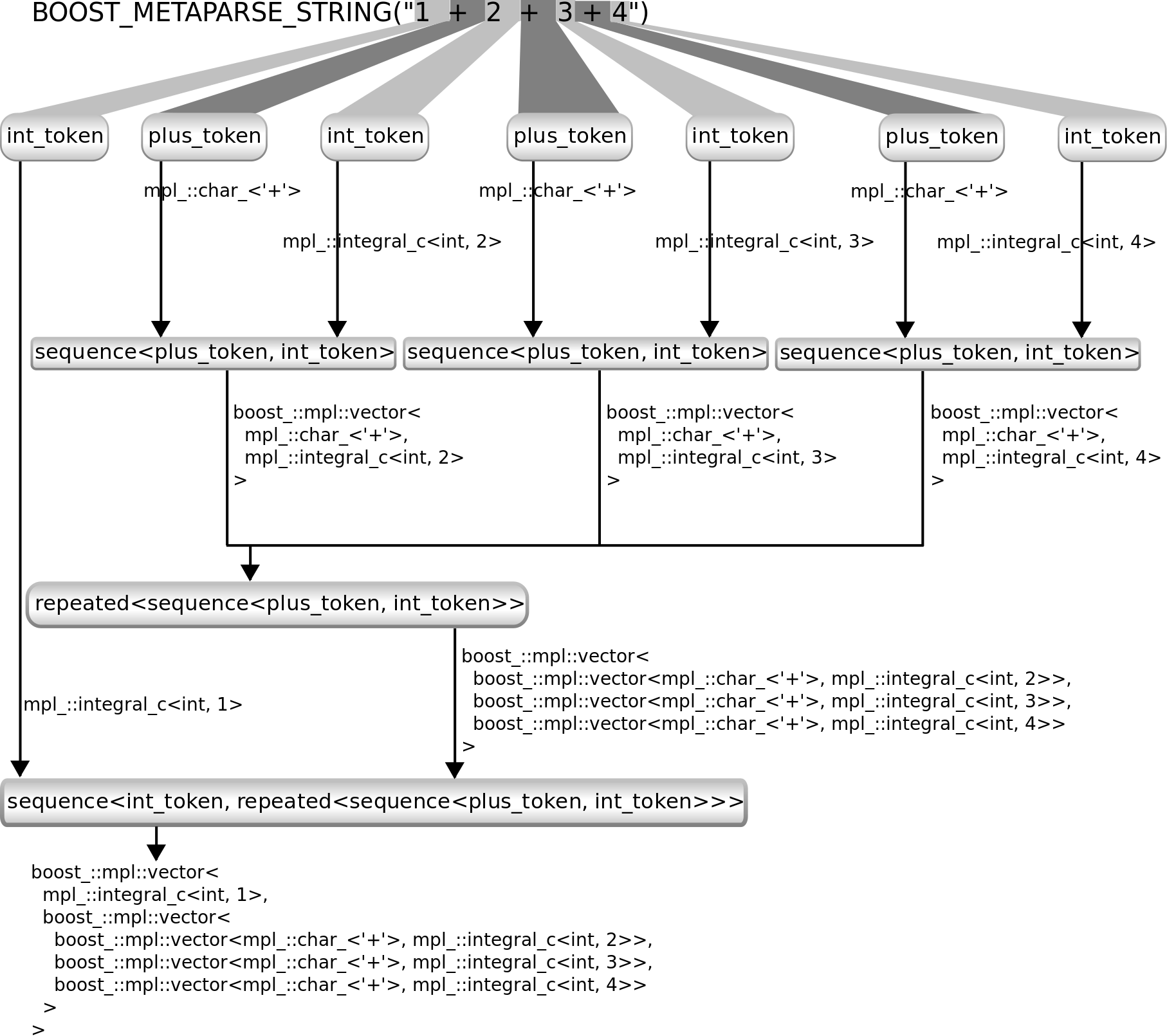
 |
Home | Libraries | People | FAQ | More |
![[Note]](../../images/note.png) |
Note |
|---|---|
Note that you can find everything that has been included and defined so far here. |
We can parse simple expressions adding two numbers together. But we can't parse expressions adding three, four or maybe more numbers together. In this section we will implement a parser for expressions adding lots of numbers together.
![[Note]](../../images/note.png) |
Note |
|---|---|
Note that you can find everything that has been included and defined so far here. |
We can't solve this problem with sequence, since we don't know
how many numbers the input will have. We need a parser that:
+ <number>
elements until the end of the input
Parsing the first number is something we can already do: the int_token parser does it for us. Parsing
the + <number>
elements is more tricky. Metaparse offers different tools for approaching
this. The most simple is repeated:
> #include <boost/metaparse/any.hpp>
repeated
needs a parser (which parses one +
<number> element) and it keeps parsing the input
with it as long as it can. This will parse the entire input for us. Let's
create a parser for our expressions using it:
> using exp_parser7 = \ ...> build_parser< \ ...> sequence< \ ...> int_token, /* The first <number> */ \ ...> repeated<sequence<plus_token, int_token>> /* The "+ <number>" elements */ \ ...> > \ ...> >;
We have a sequence
with two elements:
int_token)
+ <number>
parts
The second part is an repeated,
which parses the + <number>
elements. One such element is parsed by sequence<plus_token,
int_token>.
This is just a sequence of the +
symbol and the number.
Let's try parsing an expression using this:
> exp_parser7::apply<BOOST_METAPARSE_STRING("1 + 2 + 3 + 4")>::type
Here is a formatted version of the result which is easier to read:
boost_::mpl::vector< // The result of int_token mpl_::integral_c<int, 1>, // The result of repeated< sequence<plus_token, int_token> > boost_::mpl::vector< boost_::mpl::vector<mpl_::char_<'+'>, mpl_::integral_c<int, 2> >, boost_::mpl::vector<mpl_::char_<'+'>, mpl_::integral_c<int, 3> >, boost_::mpl::vector<mpl_::char_<'+'>, mpl_::integral_c<int, 4> > > >
The result is a vector
of two elements. The first element of this vector
is the result of parsing the input with int_token,
the second element of this vector
is the result of parsing the input with repeated<
sequence<plus_token, int_token>>. This second element is also a
vector. Each element of
this vector is the result
of parsing the input with sequence<plus_token, int_token> once. Here is a diagram showing how
exp_parser7 parses the
input 1 +
2 + 3 + 4:

The diagram shows that the + <number> elements are parsed by sequence<plus_token,
int_token>
elements and their results are collected by repeated, which constructs a
vector of these results.
The value of the first <number>
and this vector are placed
in another vector, which
is the result of parsing.